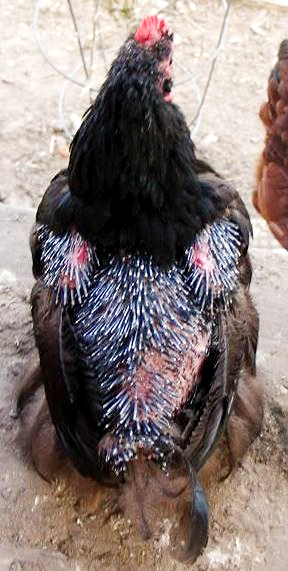Cannibalism in the Flock
- Todd Muse
- Jan 13, 2018
- 3 min read
Cannibalism can be a serious problem in the flock if it’s allowed to continue without intervention. Noticing flock persecution can help you identify the victim. I remember years ago I had a chicken that got outside it’s lot and without giving it a thought, I threw her back in with the rest of the guys. Hours later we found her a bloody mess where she had been brutalized by the flock. We brought her into the utility room and tried to take care of her, but it was too late. I felt so bad that I had thrown her back into what she had tried to escape, it bothers me to this day. It became obvious a little too late that she was trying to escape the bullying and if I had taken note of the problem she probably would not have died such a violent death.
Overcrowding, boredom, lack of exercise, too few feed and water containers, parasites, injury or bleeding, too hot without enough ventilation, dark nests, too much light in the coop, abrupt changes, injured or dead birds left in the flock are all conditions that can trigger cannibalism.
Head picking generally occurs in older birds, due to fighting. Feather picking can be spotted by bare patches on a bird’s neck, breast, back and below the vent. Tail feather picking is common in growing birds, when new feathers filled with blood attract pickers before enough plumage grows to cover the area. Vent picking is the worst form of cannibalism because it escalates quickly and often ends in death.

Cannibalism can be prevented providing a proper environment. By giving the lowest ranking bird a place to escape, and an extra place to eat can go a long way in preventing a major problem. If you have more than one cock provide feeders per cock. Position feeders and waterers so no bird must travel more than 10 feet to eat or drink.
One step in controlling cannibalism is by removing the injured bird. Then remove and identify the worst of the pickers, which is difficult to always catch one in the act, but sometimes they can be spotted by the blood or feathers on face feathers or beak. By removing the instigator, you can remove the one who teaches others.
Another option is to replace light with a red hue by placing red plastic over windows or installing a red-light bulb which will make it harder to spot the red bleeding from wounds. Try not to provide more than 16 hours of light per day. constant light can be stressful to the birds.
Give them something to pick at by adding oats, barely, or alfalfa to the birds ration. Add vitamins to their water or to their feed source to alleviate cravings. Put things inside that will keep them scratching, climbing or exploring, hang a bunch of greens, hang a pie pan from the ceiling, place roost in different places, and curtains in front of nest boxes. Anything that will attract attention and peak curiosity is a good thing.
I have seen musical instruments, toys, mirrors, plastic bottles filled with treats with a small hole to challenge in coops and runs that will not only give the flock a form of distraction, but will bring a lot of entertainment to the flock owner.
If chickens are constantly fighting, there may be insufficient floor space, or inadequate ventilation. Never cull a chicken for being at the lowest pecking order, if you have even 2 chickens, one will be at the bottom of the pecking order.

For the most part chickens get along well with each other once the pecking order has been established. I have found chickens to be the most enjoyable and entertaining part of my days. Sometimes cannibalism can become a problem, but it’s not something that cannot be fixed with a little intervention the rewards far surpass the negatives.


_JPG.jpg)




Comments